Enhancing writers & editors collaboration
Intro
The project at Minute Media, a premier digital sports media company, focused on the “Voltax” multi-text editor, crucial for content creation across its brands.
The goal was to optimize Voltax, enhancing collaboration between writers and editors. Our task involved identifying usability issues, assessing their impact on productivity, and refining Voltax to meet the company’s KPIs, ultimately boosting editorial efficiency.
Summery
90min, created by sports enthusiasts, focuses on delivering news and content analysis. Voltax, an integral part of Minute Media, is a versatile multi-text editor used across various company brands for collaborative publishing. The project goal was driven by a critical question:
How can we enhance communication and collaboration between editors and writers within this framework?
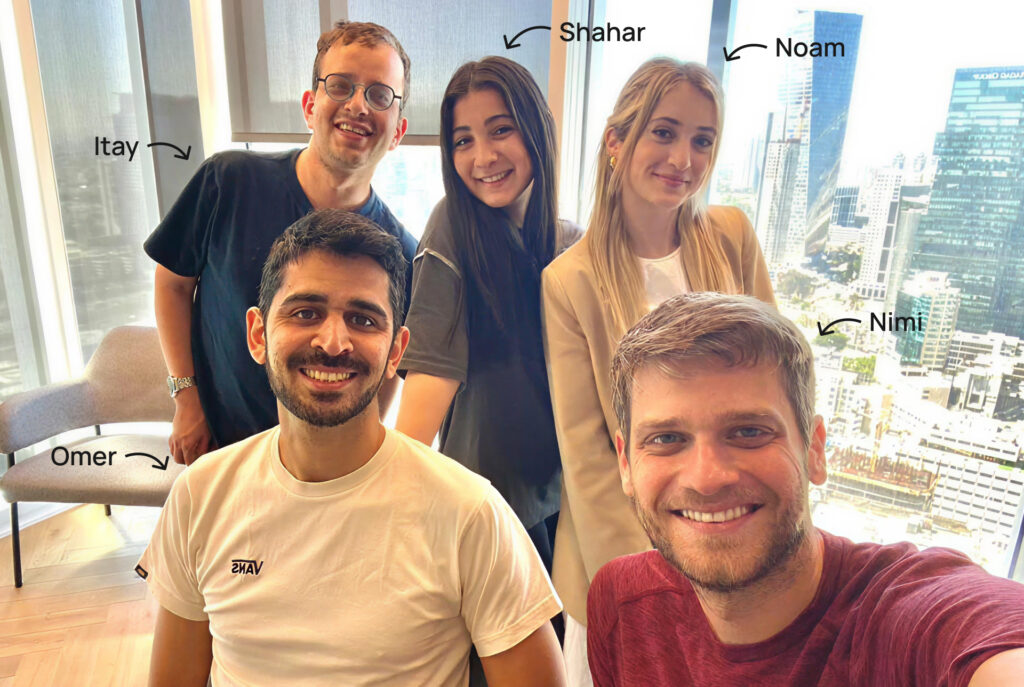
A structured all-in-one system that boosts efficiency and communication

Endorsements





Discover
Market Research
We searched for products that we think have similarities with Voltax.
Research focus
Collaboration, CMS, Project management & Rich text editors.
Features comparison
We compared the features of the different platforms
& checked whether they exist in Voltax.
Main competitors
Monday, Jira, Docs, Clickup, Figma, Trello etc…
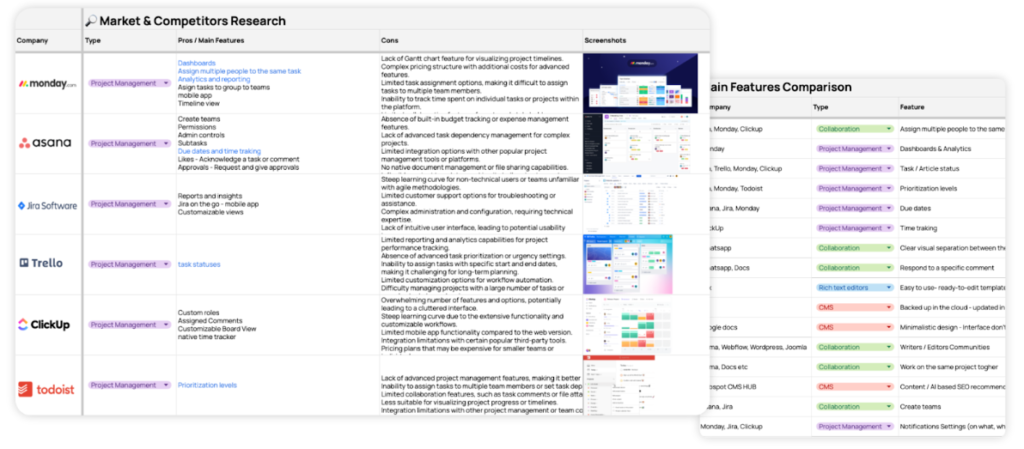
Main conclusions
Minimalistic design
Displaying only relevant information helps reduce cognitive load.
Personal Statistics
Among task management platforms, dashboards and analytics were shown to drive user engagement.
Status, prioritization, dates
We observed the importance of system feedback to users by reflecting key parameters such as task statuses, priorities, and deadlines.
Notifications
We discovered that providing notifications for every action occurring in the platform is crucial to keeping users informed at all times.
User Interviews
3 interviews - 1 Writer & 2 Editors
Our goal was to learn about the different ways of collaborative work between writers and editors as well as their potential pain points in the Voltax platform.
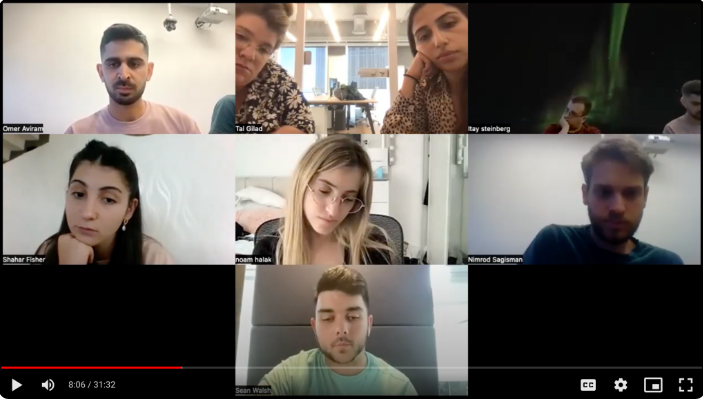
Pain Points & Quotes
Currently, Important tasks can get lost
“So if you have an important note about an article that can sometimes get missed in the Slack channel.”
“Whereas on Voltax, if you leave a note on an article, nobody gets any notifications”.
Wasting time on using different products
We will have that back and forth on Slack rather than on Voltax because it’s just a lot quicker to get response from somebody”
“Take an idea from Google sheets, go to Slack, publish it, and go back to Google Sheets to write who is the writer….”
No indications on system activity - Uncertainty
“We favor Slack over Voltax is because you get direct notifications”.
Difficult to understand at first why the article wasn't good.
“at the time I didn’t understand why it wasn’t a suitable piece.”
Lacking of all-in-one system for work management which will reflect the relevant statuses to the users
“So Slack, it’s is mainly for like very direct messages … maybe we would prefer Emails because it’s more direct … And we also use a Monday platform”
Lacking a system for simple team talks and brainstorming which is necessary for remote work
“We also using emails when it’s not urgent…”
Multiple platforms create confusion at work
“Voltax doesn’t really have too many ways to kind of either store
the information that we want on Google sheets.”
“Google Sheets is just really easy to use and store your data to let people know what you’re doing.”
“We have a Google sheet which we update”.
Inefficient communication between writer and editor
“Slack is constant chat throughout the day”
“You can just put a message in there and there is no answer…“
Personas
Rick - Editor
- B.A. English Literature
- Liverpool
- Full time job
Goals & Objectives
- B.A. English Literature
- Liverpool
- Full time job
Necessary knowledge & skills
- Strong editing skills
- SEO Knowledge
- Field Knowledge
- Management skills
- Technical abilities
- Research skills
- Adaptability
- Communication
- Ethical standards
- Passion for soccer
Main pain points
- Using several tools for different needs – “Slack for daily talks, emails for important stuff”
- Having to update a status sheet – The system isn’t reflecting its status so the users have to spend time doing that, focusing less time on working.
- Lacking a system for work management – “Voltax doesn’t have ways to store the information we have like on Google sheets.”
- Communication issues – “We use Slack on a daily basis, we always aware of what is going on…”
Tomi - Writer
- Digital marketing & communication
- England
- Freelance
Goals & Objectives
- Suggest articles ideas
- More articles = income
- Keep being hired
- Talk with colleagues
Necessary knowledge & skills
- Football knowledge
- Technical abilities
- Writing skills
- SEO
- Research skills
- Adaptability
- Communication
- Ethical standards
Main pain points
- Wasting time using different products – ““I take an idea from the Google Sheets, go to Slack, publish it, go back to Google Sheets to write who is the writer…”
- Important tasks can get lost – “If you have an important note, that can get missed in Slack.”
- No alerts on system activity – “We favor Slack because you get direct notifications”, “On Voltax…nobody gets any notifications”
Empathy Map
One of the methods we used to better define the problem was an empathy map, which helped us gain a deeper understanding of our users and prioritize their needs. We focused on two main user types — the writer and the editor — and mapped what they say, think, do, and feel.
Writer
Says: “Slack gives faster responses”
Thinks: “I need to write more articles to earn more money”
Does: Uses multiple tools to track daily tasks
Feels: Pressured and overwhelmed by incoming assignments
Editor
Says: “I need a clearer view of who’s responsible for what”
Thinks: “I need to know which topics are most popular to generate more revenue”
Does: Manages writers and topics through Google Sheets
Feels: Responsible for the quality of published content
Define
How might we?
We then moved on to the Define stage. As part of developing and deepening our understanding of the personas, we used the How Might We method to reframe the problem into a question we could answer and generate potential solutions for. This technique allowed us to approach the design and ideation process more effectively, guiding us toward practical and creative outcomes.
Through a series of iterations (visible in the sticky notes), we refined our ideas until reaching the final HMW:
How might we improve writers and editors collaboration on Voltax platform?
In our view, this question most holistically reflects the problem we want to solve, while addressing the needs of both main personas on the platform.
KPIs
We've concluded KPIs, and started to focus on these parameters:
Maximize the actual working (editing & writing) time
Minimize the count of tasks that get lost
Minimize the work management time
Minimize the time to respond to system activity
Develop
MVP Brainstorm
To address the challenges of the current system, we chose solutions that streamline workflow management and improve communication between writers and editors. At first, we discussed two different approaches — chat or communication features within the system, and workflow management — and eventually decided to focus on workflow management, which includes:
Prioritization and workload management: The main recurring theme was the inefficient, time-consuming daily routine for both editors and writers, which slows down actual work. An integrated system that supports these processes can reduce unnecessary workload and maximize productivity.
System status visibility: Our CMS platform will reflect the status of articles based on their current urgency, creating a clear hierarchy of importance that helps editors prioritize tasks. In addition, real-time status updates and notifications within the system will minimize the need for external tools like Google Sheets, allowing editors to focus on their core responsibilities.
Consistency and standards: Our all-in-one system will embed a structured workflow template to ensure consistent communication methods across teams. This will maximize efficiency and eliminate duplication caused by using different communication tools.
Deliver
Editor’s Workspace

Editor’s Workspace – Kanban
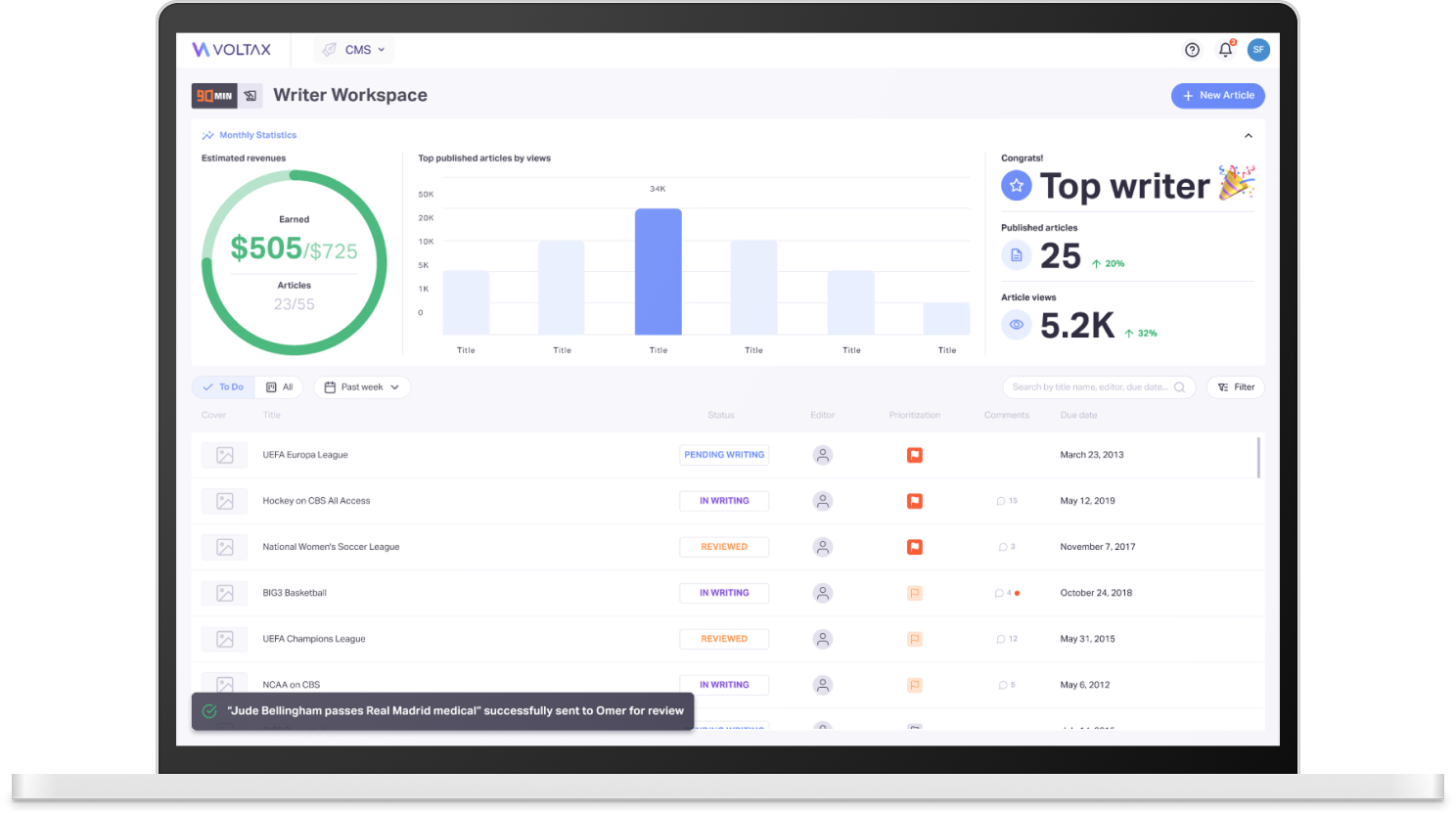
Editor’s Workspace – List display with statistics
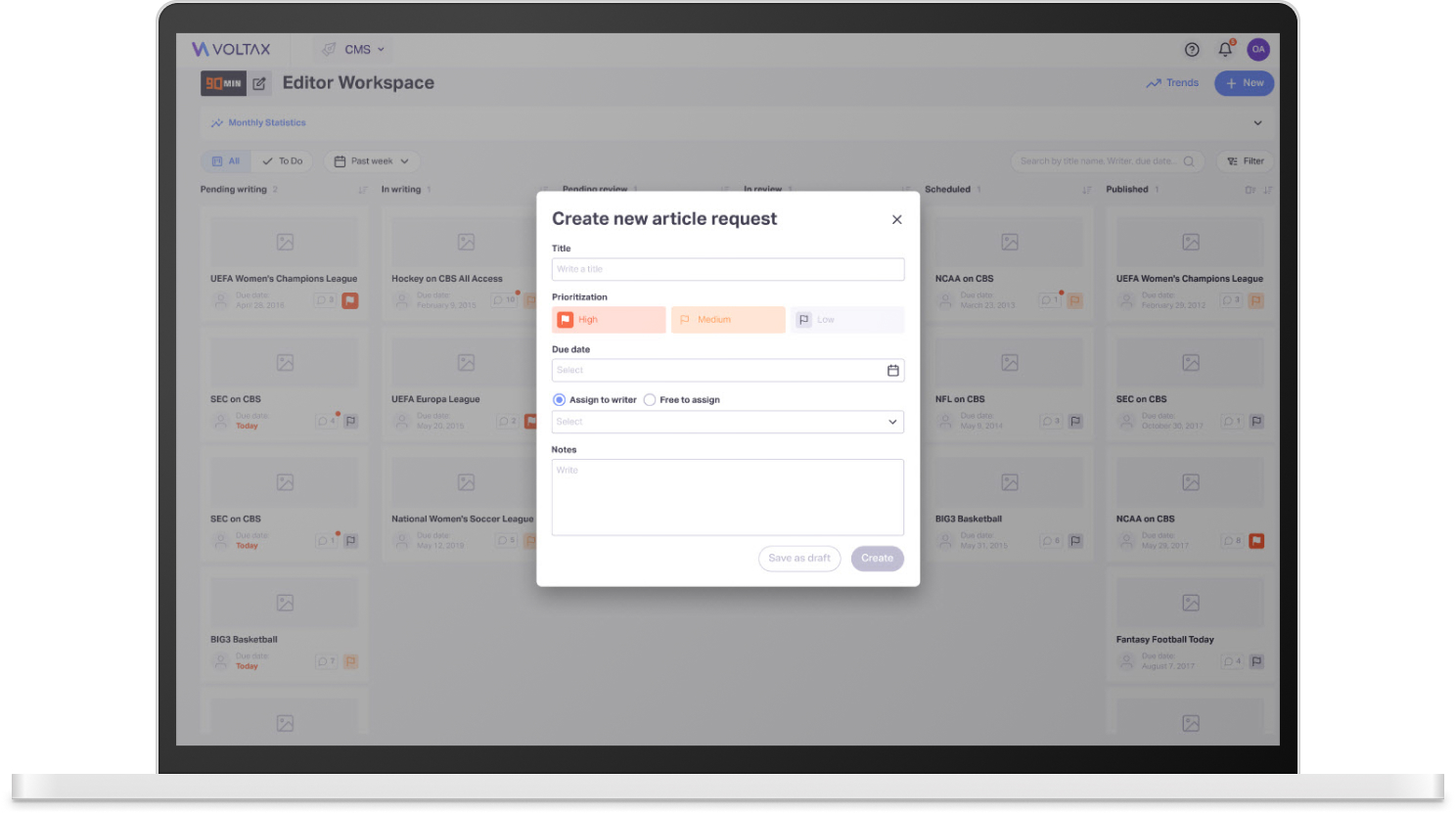
Editor’s New Article Request
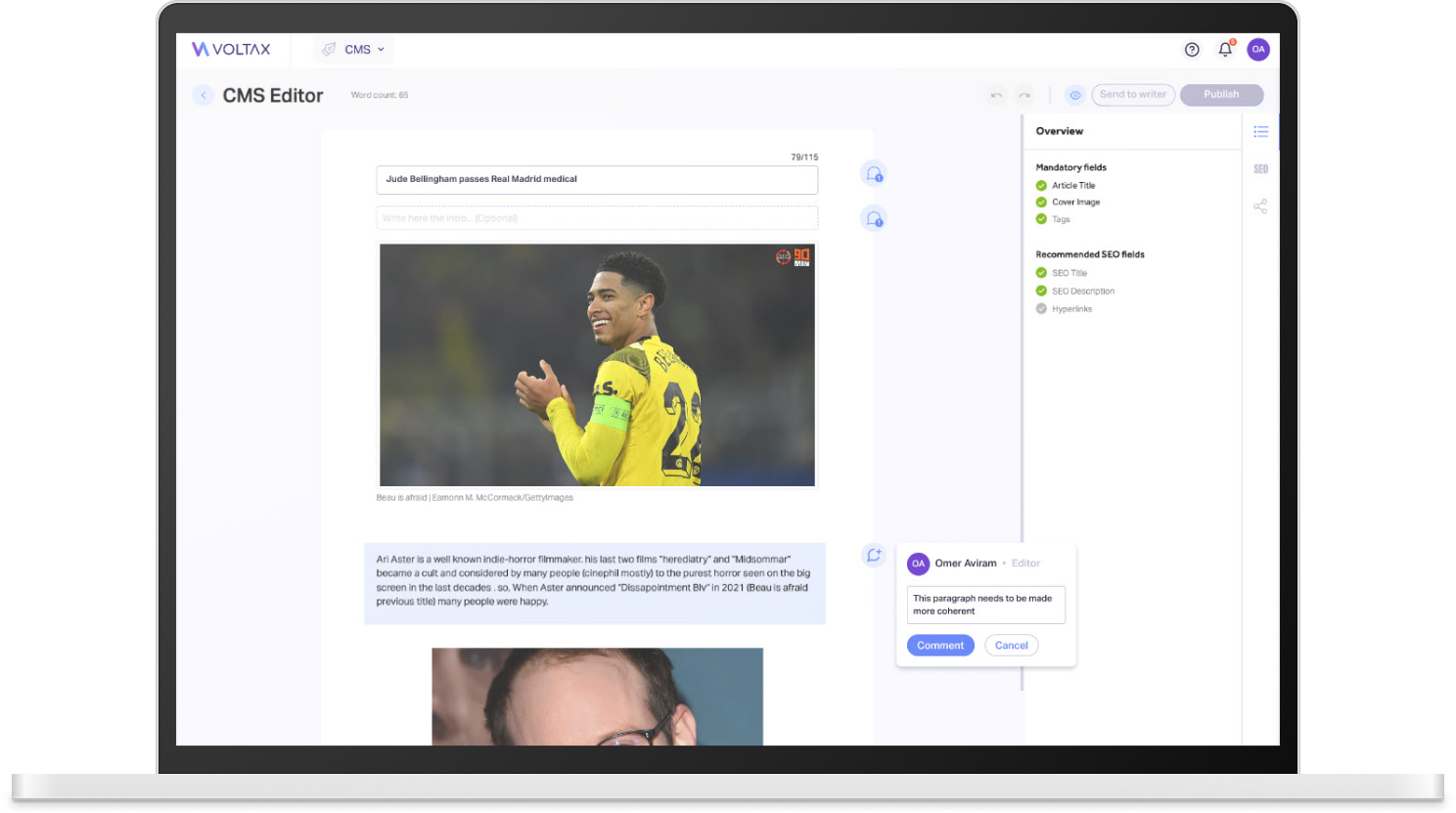
Editor’s Article Review
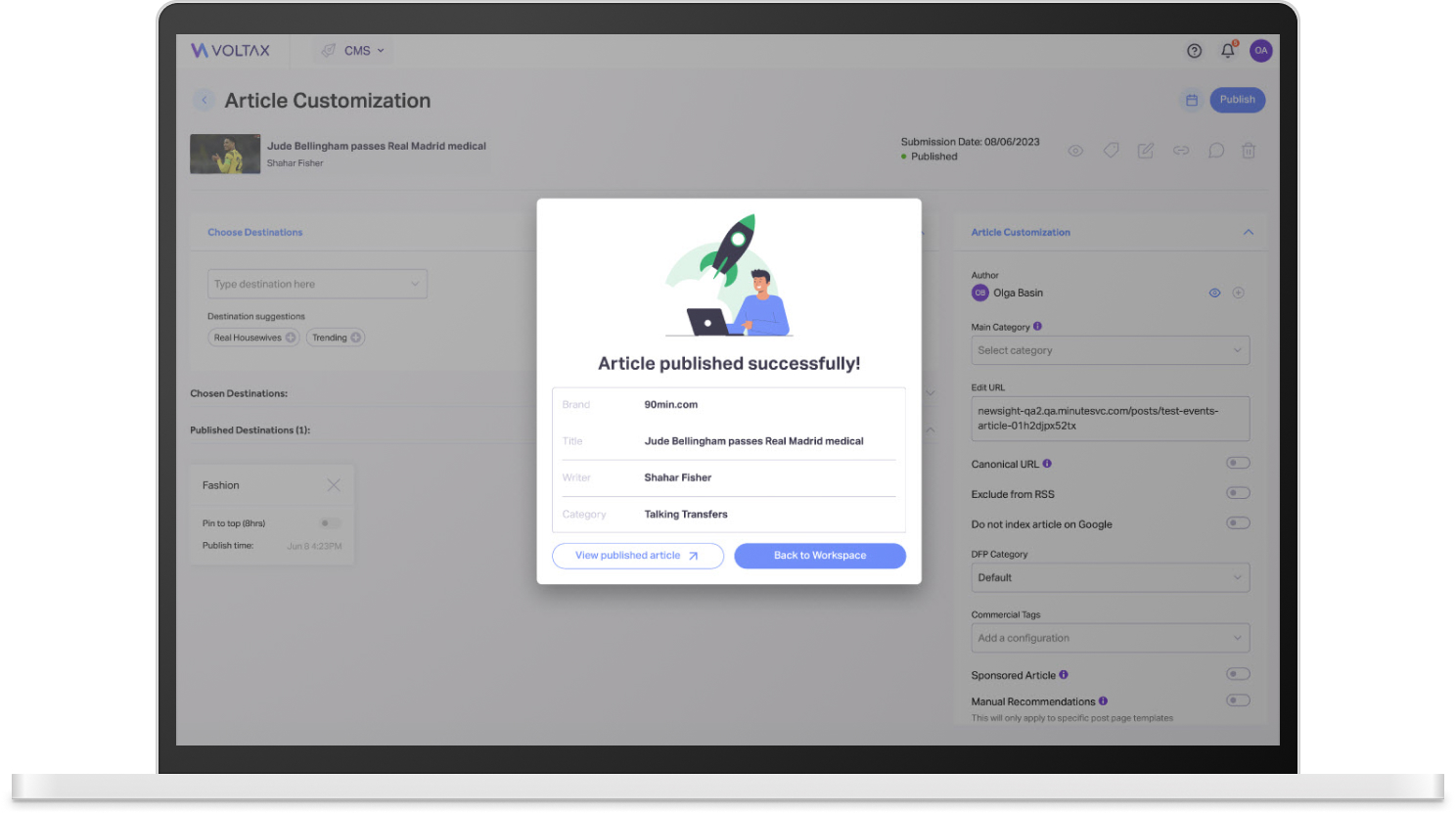
Editor’s Article Publish
Writer’s Workspace
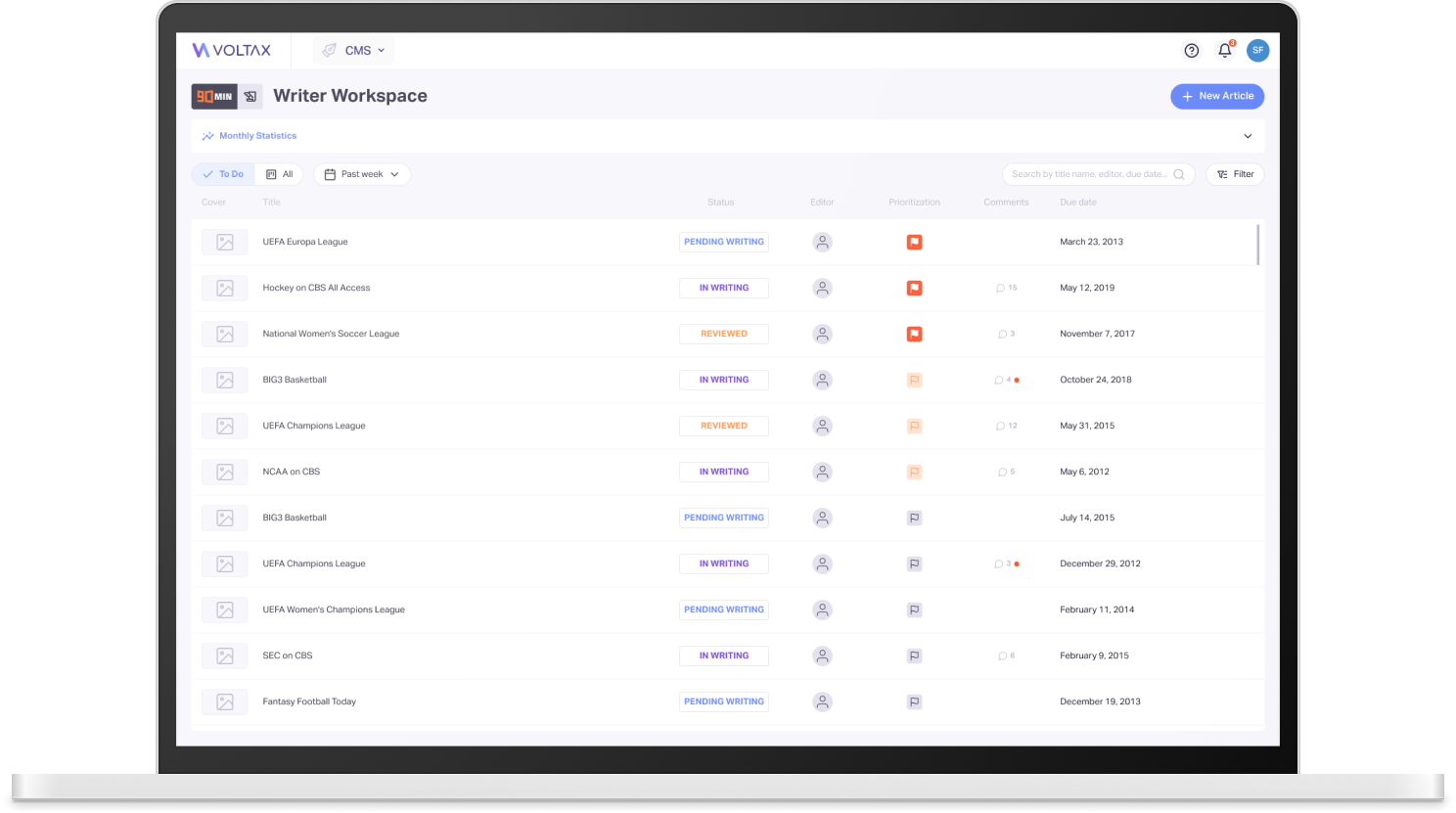
Writer’s Workspace – List

Writer’s Workspace – List display with statistics
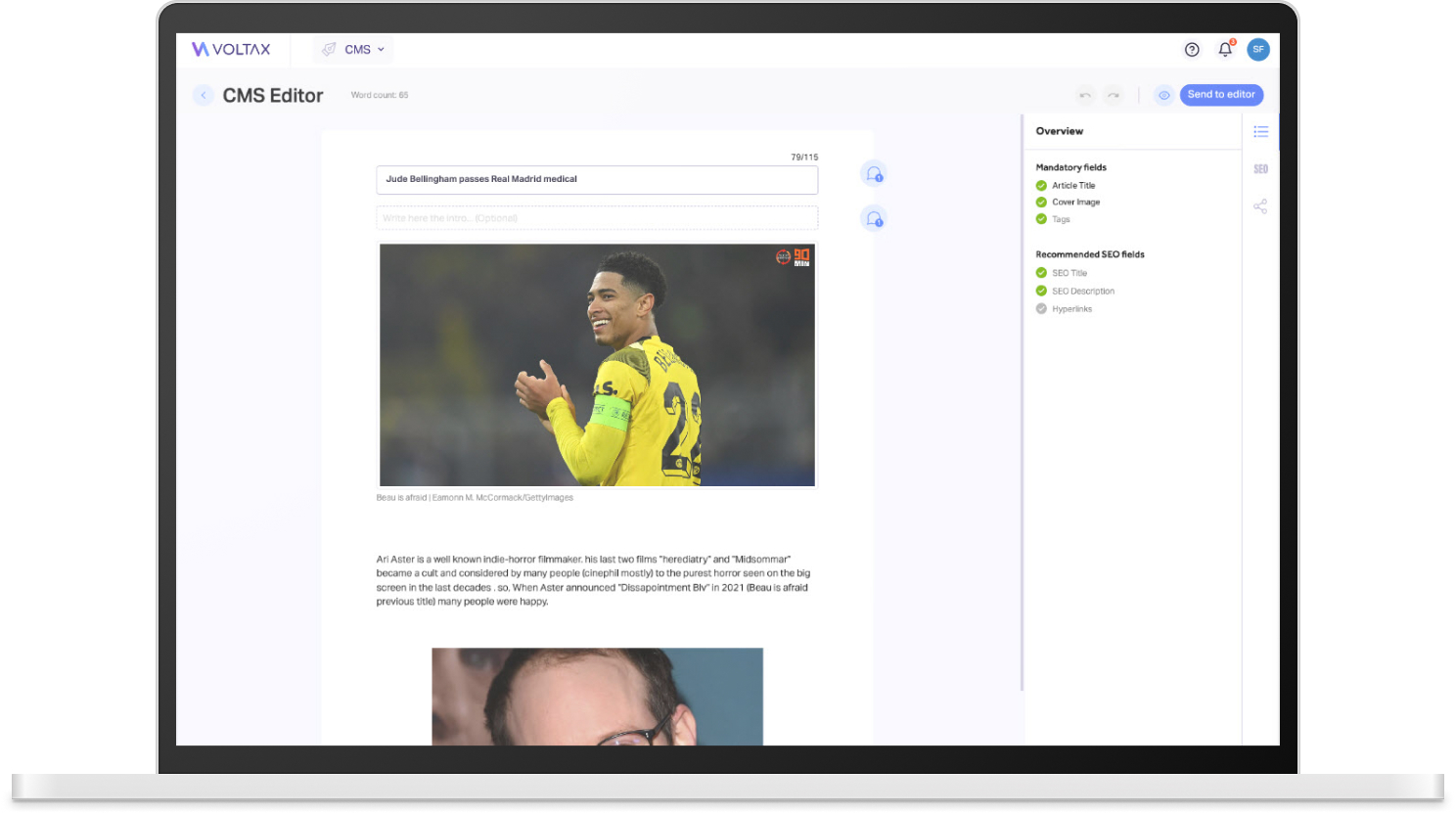
Writer’s Article Review
Video Presentatio
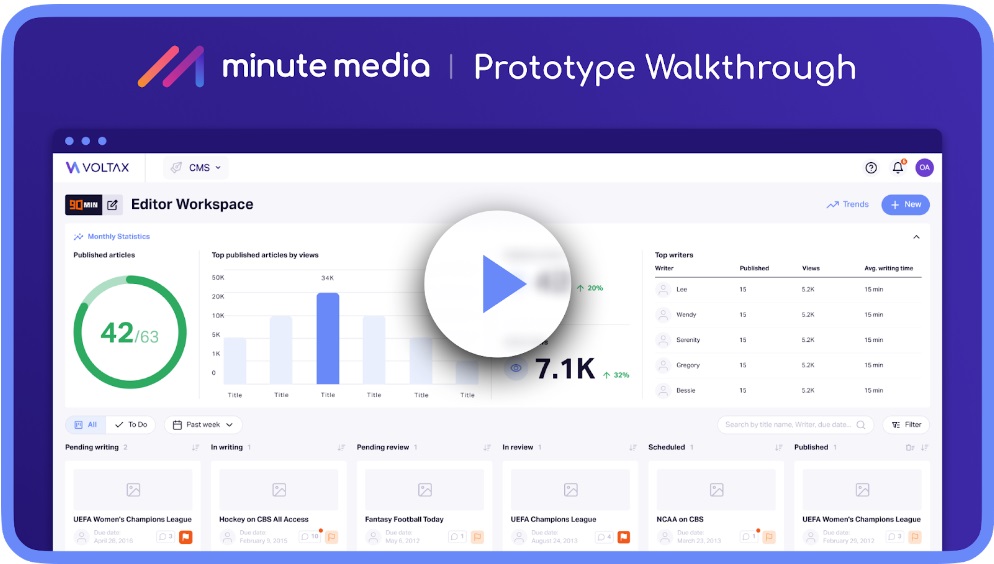
Psychology in Design
Option 1 - Kanban
ur system supports editors with an overview display that organizes tasks by status in columns.
💡 Miller’s Law: Limit of 7 tabs per column, with “Load more” to prevent overload.
💡 Real-World Compatibility: Uses familiar writing terminology for intuitive navigation.
💡 Consistency & Visual Feedback: Donut chart progress tracking boosts engagement.
💡 Recognition Over Recall: Contextual assistance reduces memory burden.
Option 2 - List
💡 Cognitive Consistency & Visual Feedback: Using clear feedback to guide users toward their goals.
💡 Loss Aversion: Writers see current vs. potential earnings, emphasizing what they lose if tasks aren’t completed.
💡 Upward Social Comparison: Performance data motivates writers to improve and gain recognition on the graph.
💡 Motivational Nudge: The Outstanding Writer title sparks competition and drives excellence.


